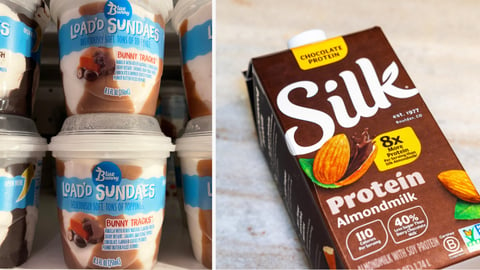Stockpiling Behavior Holds As Consumers Signal Higher Purchase Intent for Groceries
Consumers around the world intend to spend more on groceries and household goods in the coming weeks, according to a tracker from Deloitte, with both bargain hunting and stockpiling behavior holding steady during the pandemic.
The consulting firm’s State of the Consumer Tracker charts responses from 18 countries, polling on such matters as spending intention, shopping preferences by channel and brand, and consumer concerns. A net spend figure represents the difference between respondents who said they plan to spend “somewhat/a lot more” from those who selected “somewhat/a lot less.”
When asked on Nov. 2 how much they intend to spend over the next four weeks compared to the previous four weeks, consumers in all regions indicated they will spend more on groceries and household goods.
Among the highlights:
United States: 26% will spend more on groceries, while 18% will spend more on household goods
India: 51% more on groceries, 52% more on household goods
Mexico: 38% more on groceries, 30% more on household goods
China: 33% more on groceries, 49% on household goods
South Africa: 35% more on groceries, 17% more on household goods
United Kingdom: 22% more on groceries, 11% more on household goods
Categories that showed declines in most regions for intent to buy include alcohol, electronics and furnishings.
In the United States, this net spend intent declined 1% for alcohol, while it dropped 11% for clothing/footwear, 8% for electronics and 15% for furnishings.
Although e-commerce is booming, consumers still cited stores as their intended shopping channel for the majority of these categories. In the United States, 83% of consumers said they intend to purchase groceries in stores, while 9% said they’ll purchase them online and have them delivered, and 8% said they’ll purchase them online and pick them up.
This is essentially the same as the Oct. 3 survey, in which responses were 82%, 9% and 9%, respectively.
It’s a similar breakdown for household goods in the United States, with 80% of consumers in the November survey reporting they intend purchase items in stores, while 13% will purchase them online and have them delivered, and 8% will purchase them online and pick them up.
This compares with the October responses of 79%, 12% and 9%, respectively.
As part of its research, Deloitte has identified four emerging consumer behavior patterns during the pandemic: the stockpiler, the convenience seeker, the bargain hunter, and the socially conscious shopper. (It notes that these personas are not mutually exclusive.) The bargain hunter is the most prominent shopper persona in the most recent survey, with 51% falling under “If I found a great deal on a non-essential item, I would buy it today.”
The stockpiler is a close second, with 49% of respondents saying their home is stocked with more than they immediately need, up just slightly from 48% in October; however, this is still down from 55% from the first survey, conducted April 19, and from its peak of 56% on May 3.
Consumer preference for name brands over store brands is most pronounced for beverages and personal care products, with 51% preferring name brands for beverages and 50% preferring them for personal care in the November survey.
When asked why, trust was the No. 1 factor, with 29% saying they trust name brand products. Perceiving name brands as being higher quality was a close second at 25%, while “It is what I have always done” was third, cited by 16%.
Fifteen percent said they choose name brands because the value of the brand justifies the price difference, while 12% said they do because name brands are more likely to be available.





